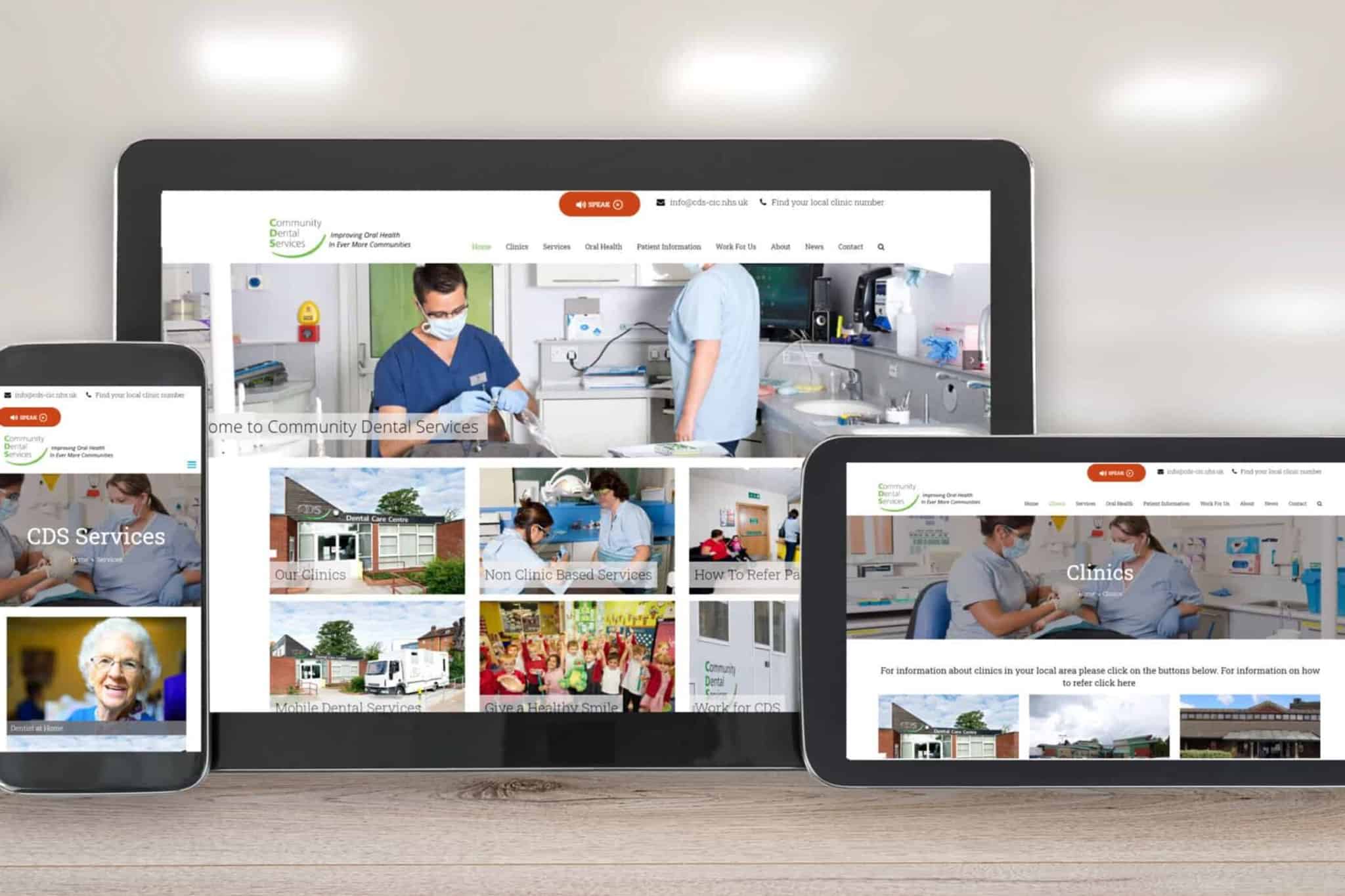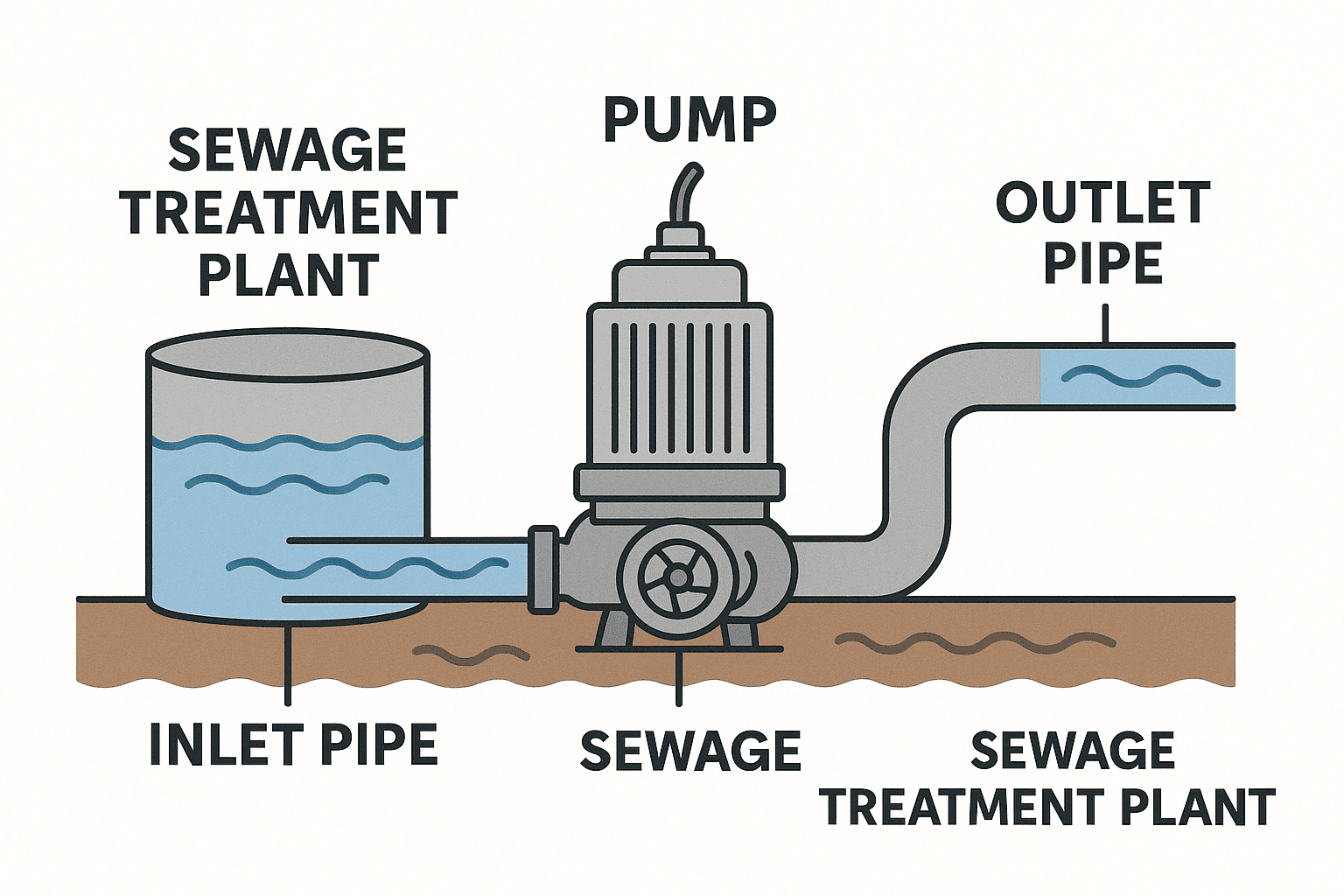Peterborough Manufacturing Marketing Don’t Be Ineffective
Marketing is a critical part of a manufacturing organisation as it connects distributors, manufacturers, and wholesalers, ensuring your product reaches its end-user. Determining the best ways to promote your manufacturing company, can take significant effort and time.
Much of Peterborough Manufacturing Marketing still relies on outdated practices that doesn’t produce results and requires significant effort. Maybe that’s why investing in a thorough B2B marketing strategy isn’t as common as you’d expect.
However, with new marketing ideas for manufacturing companies like improved inbound marketing that includes lead generation, social media, content, among others, manufacturers can reach their goals and connect with new audiences.
Manufacturing companies are succeeding in attracting new prospects, retaining existing customers, and driving sales by leveraging content and thought leadership to promote their products and services online. For a manufacturing company looking to develop its reputation as a thought leader, Hosting/sponsoring a webinar, publishing a whitepaper that shows industry knowledge or product training, creating a company blog, and attending industry events and trade shows are recommended .
The digital marketing strategy for manufacturers used in B2B is entirely different from the strategies used in other industries as the audience is unique. To get relevant traffic and to increase your ROI, it’s essential to collect the following information from the client.
- A list of products or services that provide high ROI
- Competitors
- Target market and target audience
- Keywords of topics that they consider relevant
- New products or services
- Industries they serve
- Complementary services or products
Marketing ideas for manufacturing companies are listed in this article
Inbound Marketing
A far more effective and less expensive way of expanding your customer reach and promoting your existing one. With Inbound marketing, you can organically attract interested prospects through website optimization, produce content that educates, engages, and excites your audience, and promote it through the digital channels which they are using. You can convert visitors into contacts on your website with tactically placed Call-to-Action (CTA) and lead generation forms.
To get the right traffic, increase their lead count, and close more business, the manufacturers should use a certain marketing strategy in manufacturing company like:
1) Provide educational content on a company blog
In the past, “blogging” has been considered as superfluous marketing jargon, but in reality, it’s one of those tactics and basic building blocks for a strong marketing foundation. A blog should be considered as a complimentary resource for your website visitors.
Your blog (news) should be used in a variety of ways such as announcing company news and initiating staff members to discussing significant industry topics and publishing educational content that helps your audience solve problems.
Blogging should provide website visitors with content that tackles their pain points, keeps your website fresh for search engines, helps you get found when prospects search online, shows your industry’s expertise. Content must be published consistently like publishing one post per month and going further producing more content (perhaps weekly). It’s generally advisable to create a quarterly blogging calendar that includes the writer, topic, keyword, and goal of every post. The results from blogging may however take time, but as you continue to publish more informative articles, ultimately you’ll improve your company’s ranking in search engine results pages, and the organic traffic you generate for your website increases.
2) High-Value Content Behind Forms
Positioning some of that content behind lead generation forms is equally important. A lead generation form is usually on a website landing page that promotes a content offer like a white paper, a webinar recording, or an e-book, etc. This lead generation form acts as a gate wherein once a visitor fills their contact information (demographics, other info, etc), they receive the content in exchange. And they become a lead.
Facilitating visitor-to-lead conversions is the main idea behind creating gated content. Now that there’s contact information, we can have the opportunity to follow up with the lead, give them related material, and develop their interest in your business or more. The lead generation forms can even help divide your possibly messy contact database, allowing you to sort contacts by their replies to a particular form filled queries!
Utilizing lead generation landing pages to promote gated content is a productive way to produce a similar amount at a much lesser cost. The more leads that you can generate depends on the number of landing pages that you have.
3) Use SEO to Increase Your Reach
Search Engine Optimization or SEO is one of the marketing strategy in manufacturing company that’s often used by manufacturers or distributors. By using SEO, one must ensure that the website can be easily found in searches by potential customers and that it outranks any competitors.
When somebody enters a keyword related to your business search into a search engine, SEO makes your website more likely to show up and rank highly. It can vary from editing the titles of your pages to gathering more links to your site and it can be very simple or more complex.
Apart from the keyword optimization, there’s a lot more to the process. Besides, it’s necessary to see that your website is responsive, you can enhance the number of leads and ultimately close more deals by ensuring that people can access your site from a variety of devices, such as smartphones and tablets.
If you are a beginner at SEO, the best way to start is to think about the phrases and words that potential customers would associate with your business/products. These may include very short or single words to longer phrases. You should then assess your website to see if these phrases/words (called “keywords”) appear anywhere in your content. If they don’t appear on your site, chances are poor for ranking. If the search engines couldn’t find them, they cannot associate them with your website. But, if they are there, then there are chances for you to rank for them. Thus, adding keywords to your page copy, titles, etc is so important.
4) Brand Awareness and Visibility
Brand awareness is the level at which a brand gets acknowledged by potential customers and rightly associated with its particular product/service. When the clients have brand awareness, they usually learn more about your business as they know it exists and is actively looking out for information on it, instead of discovering it on search engines.
Remember that your business isn’t likely to get very far if it doesn’t have a brand to set itself apart no matter how much you post on social media, how much you spend on advertising or the quality of your products and services. Your brand turns up your company name, logo, content, into an experience for your clients and audience. Brand awareness places businesses ahead of their competitors.
Benefits of branding:
- customer recognition
- credibility
- consistency
- customer loyalty
- brand equity
- attracts talent
Having a brand is not simply enough. It’s important to build that brand constantly and strengthening its associations in the minds of your target audience. The more well-known people are with something, the more they trust it and stick to it. Likewise, the more familiar the target audience gets with your brand, the easier it will be to –
- promote your business across various channels
- build a strong business reputation
- successfully introduce new products/services
- find and maintain loyal customers.
Brand awareness is important to achieve a range of marketing goals and objectives like generating more leads, staying ahead of the competition, and building an audience.
5) Convert Interest into Inquiry for Lead Generation
By focusing more on high-quality leads that have better chances of converting into pipeline opportunities and customers, the marketers can help sales perform better. Generating “high-quality leads” would usually be the B2B marketer’s leading challenge. The more validated and verification of every lead/database, the better would be the quality of the lead.
The best way for B2B marketers to capably verify the accuracy of their lead data captured online before turning the said inquires over to the sales force is by –
Creating a marketing funnel
Bringing inquires (leads) into one spot and qualifying them is the main purpose of the marketing funnel. It generates Sales-ready leads and nurtures the leads that aren’t Sales-ready. The lead qualification must first categorize leads as per their “Sales readiness” and business fit. Secondly, it must manage all the incoming leads.
It’s essential to note down that most people visiting your website aren’t coming to purchase right away. They visit your site for information. The same kind of details cannot be expected from a early-stage lead when compared to a later-stage lead. People begin to question the value of providing too much information on forms before you’ve earned their trust. You can start by requesting basic information such as an email address and later on in the next step ask the first and last name. As you earn trust, you can ask for more detailed insights going further.
Using inside sales team phone/email to qualify based on lead scoring
Few companies may use third-party list providers to verify the information. The best way to assess a company’s interest is through a good conversation. An email could be an excellent way to create a one-on-one dialogue by asking queries as well. To have relevant chats with prospects, you can use data from your lead-nurturing and lead-scoring systems. You can ask questions that show you understand the challenges your prospects face depending on your company’s value plan research. Initiate ideas about how your business can help them meet those challenges.
Doing this way will help earn trust more quickly, build relationships that can impact your sales pipeline.
6) Generate marketing qualified leads that need to be nurtured
The significance of an effective lead nurturing strategy becomes very clear, with companies adopting inbound marketing as a way to generate more leads. Executing an effective lead strategy can have a major impact on the results of your customer retention, inbound marketing strategy, customer loyalty, revenue, and more.
How to nurture leads?
Nurturing leads is vital to the success of your business as these tactics directly impact a customer’s decision about whether or not they want to convert into paying customers. Purposefully engaging your target audience by providing related information, sustaining them in any way they need, and maintaining a sense of glee throughout every stage of the buyer’s journey is the process of nurturing leads. Several ways can be used to nurture leads such as including targeted content, timely follow-ups, and multi-channel nurturing. No matter what type of business you work for, the below-ones are the most effective lead nurturing strategies.
- Leverage targeted content : Identify the most qualified leads by tailoring entertaining, interesting, and delightful content to target audience members.
- Use multi-channel lead nurturing techniques: Rather than just email, reach, and nurture your audience where they are, on multiple channels.
- Focus on multiple touches: Increase touches with a mix of content channels and types to boost your interactions and commitment among target audience members.
- Follow up with leads on time: Follow up with your leads in a timely manner to keep them engaged and involved as well as keep your brand on top of your mind.
- Send personalized emails: To promote customer retention, you can personalize your emails (and all lead nurturing tactics, whenever possible).
- Lead scoring tactics: Implementing a lead scoring strategy can help determine which leads you should focus your time on.
- Align your sales and marketing strategies: To improve your lead nurturing tactics and increase customer retention, you can align sales and marketing teams.
7) Improve ROI
To catch the client’s attention and make them more aware of your company, inbound marketing centres on providing directly useful, engaging content to prospective clients. The ultimate goal is to move them from one stage of the sales funnel to the next i.e. converting them from a website visitor to a lead and then from a lead to a paying customer.
So, how do you improve your inbound marketing ROI?
- Identify And Set Your Goals Up Front
- Determine your ideal buyer
- Categorize topics which appeal to your Target Audience’s Problems
- Create Useful, Unique Content Marketing Assets
- Nurture Your Leads Through the Sales Funnel
- Elevate Your KPIs And Recognize Your Goal Metrics
- Report Your Findings Regularly To Track ROI
If you aren’t able to see the ROI that you’re expecting, work back through every step –
- Set new goals
- Continue to create quality content
- Connect with your prospects regularly
- Review your metrics and measurement
Peterborough Manufacturing Group What Should It Do
Peterborough Manufacturing Club An Opportunity To Help Peterborough Manufacturers
A Peterborough Manufacturing group is in the process of developed. The cluster will potentially offer a number of services / elements to manufacturers and related companies.
To best serve the Peterborough manufacturing group I think the following activities should be considered
Visits To Peterborough Manufacturing Factories
- Factory visits: I remember when there used a made in the UK programme of best practice visits to major manufacturers where you had the opportunity to
- Walk round the factory under normal operation conditions
- Get talks from key people within the organisation
- Discuss challenges and successes
- From an innovation and creativity perspective they provided a fantastic opportunity to see how others solved problems that were possibly typical to many
- Informative presentations: having some industry recognised speakers who have shown that they have the capability to make a difference within UK manufacture.
- Potentially there are opportunities for a buying group to be formed that could consolidate procurement of standard components / items
- With such a group of manufacturing experts in one place there is possibly the chance of having a manufacturing questions. Now it could be that with a manufacturing group there is an event greater need to have non engineers as part of the process. Key questions for the manufacturing sector are possibly based around a number of themes
- Efficiency – how can I make more for less resource or how can I make the item quicker without compromising quality
- Effectiveness
- How do I get more customers? Now this is a classic question in its broadness. Which new customers do you want. Do you really want customers to buy that particular product range
- How can I increase my prices.? Again another ‘priceless’ question which is very marketing focused and requires extensive marketing knowledge if one is to make informed decisions
- Peterborough Manufacturing Club companies can get practical help by simply clicking the link
Peterborough Manufacturing Marketing
For an SME manufacturing company based in Peterborough, here are some essential marketing strategies and activities that you should consider:
- Develop a Comprehensive Marketing Plan: Start by creating a well-defined marketing plan that outlines your business objectives, target audience, competitive analysis, and marketing tactics. This plan will serve as a roadmap for your marketing activities.
- Build a Strong Online Presence: In today’s digital age, having a robust online presence is crucial. Develop a professional website that showcases your products, expertise, and contact information. Optimise it for search engines (SEO) to improve your online visibility. Additionally, utilise social media platforms relevant to your industry to engage with your audience and promote your products.
- Identify and Understand Your Target Audience: Clearly define your target market and understand their needs, preferences, and pain points. This knowledge will enable you to tailor your marketing messages and strategies to effectively reach and engage your potential customers.
- Content Marketing: Create valuable and informative content that showcases your industry expertise and addresses the pain points of your target audience. This can include blog posts, articles, whitepapers, case studies, or videos. Distribute your content through your website, social media platforms, email newsletters, and relevant industry publications.
- Leverage Email Marketing: Build an email list of interested prospects, customers, and industry contacts. Send regular newsletters and updates to keep them informed about your latest products, promotions, industry trends, and relevant news. Personalise your emails and segment your audience for better targeting.
- Attend Trade Shows and Industry Events: Participate in trade shows and industry events relevant to your manufacturing sector. These events offer opportunities to showcase your products, network with potential customers and suppliers, and stay updated on industry trends. Consider speaking at conferences or organising workshops to establish your authority and gain exposure.
- Collaborate with Influencers and Partners: Identify influencers or industry experts who have a significant following and credibility in your niche. Collaborate with them for endorsements, guest blogging, or joint promotional activities. Additionally, explore partnerships with complementary businesses to cross-promote each other’s products or offer bundled solutions.
- Implement Search Engine Optimisation (SEO): Optimise your website and content to improve your organic search rankings. Research relevant keywords, optimize on-page elements (titles, meta descriptions), and ensure your site has a user-friendly structure and fast loading speed. This will help potential customers find your business when searching for relevant products or services.
- Monitor and Analyse Results: Regularly track the performance of your marketing activities to assess their effectiveness. Use web analytics tools to measure website traffic, conversion rates, and user behavior. Analyse data from social media platforms, email marketing campaigns, and other channels to make informed decisions and refine your strategies accordingly.
- Customer Relationship Management (CRM): Implement a CRM system to manage customer interactions, track leads, and nurture relationships. This will help you improve customer satisfaction, streamline your sales process, and identify upselling or cross-selling opportunities.
Peterborough Manufacturing Marketing – remember, marketing strategies should be tailored to your specific business, industry, and target audience. Continuously adapt and refine your approaches based on market trends and customer feedback to achieve the best results.
If as a Peterborough Manufacturing company you would like to improve your marketing and generate more profitable sales then contact Andrew Goode MBA, MSc, FCIM Click here to arrange a call
Other articles linked with marketing metrics that may provide additional insight. Marketing metrics and analytics, marketing ROI Planning , marketing revenue analytics and Marketing Measurement Metrics and Website Design










